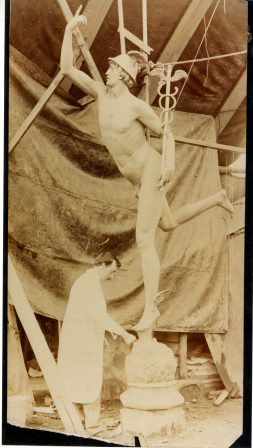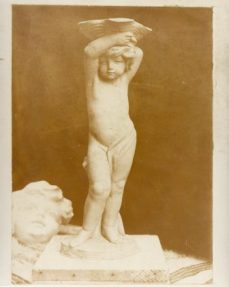This month’s Pulham post looks at the story of local sculptor Charles Giddings. Giddings produced sculptures for international clients including Boston Cathedral in the USA and the National Art Gallery, Ottawa. He carved many of England’s WWI memorials and also produced models of famous people. Locally his works included busts of King George V and King George VI which stood in the former Clock House and are now on display in the Museum. He also designed a number of garden pieces for Pulham & Son.
Giddings was born in 1870 in Wiltshire. When he was 20 he went to London to study at the Westminster School of Art. He settled for a time at Wandsworth where his first two children were born, before moving to 34 Amwell Street, Hoddesdon in 1910.
Giddings’ designs for Pulham & Son are listed in the company’s 1925 ‘Catalogue of Garden Ornaments’, a key resource for anyone researching the history of the firm. The first featured piece is a kneeling figure carrying a bowl, shown in the catalogue as an illustration, and below in real life.

Giddings also designed the company’s ‘Flora Sundial’ and a special ‘Giddings figure’ that could be bought separately or as part of the ‘Giddings Fountain’.
His largest creation for the firm was the statue of Mercury for a fountain at Madresfield Court in Malvern, made famous as the set for Brideshead Revisted. The statue is 11 feet tall and has had to be removed from the fountain for safety reasons.

Giddings died on 5 November 1946 and his obituary appeared in the Hoddesdon Journal. When you visit the Museum you can see his busts of King George V and VI in the Petter Gallery, and artefacts relating to Giddings will also be on display in the Pulham exhibition launching 14 January 2017.





